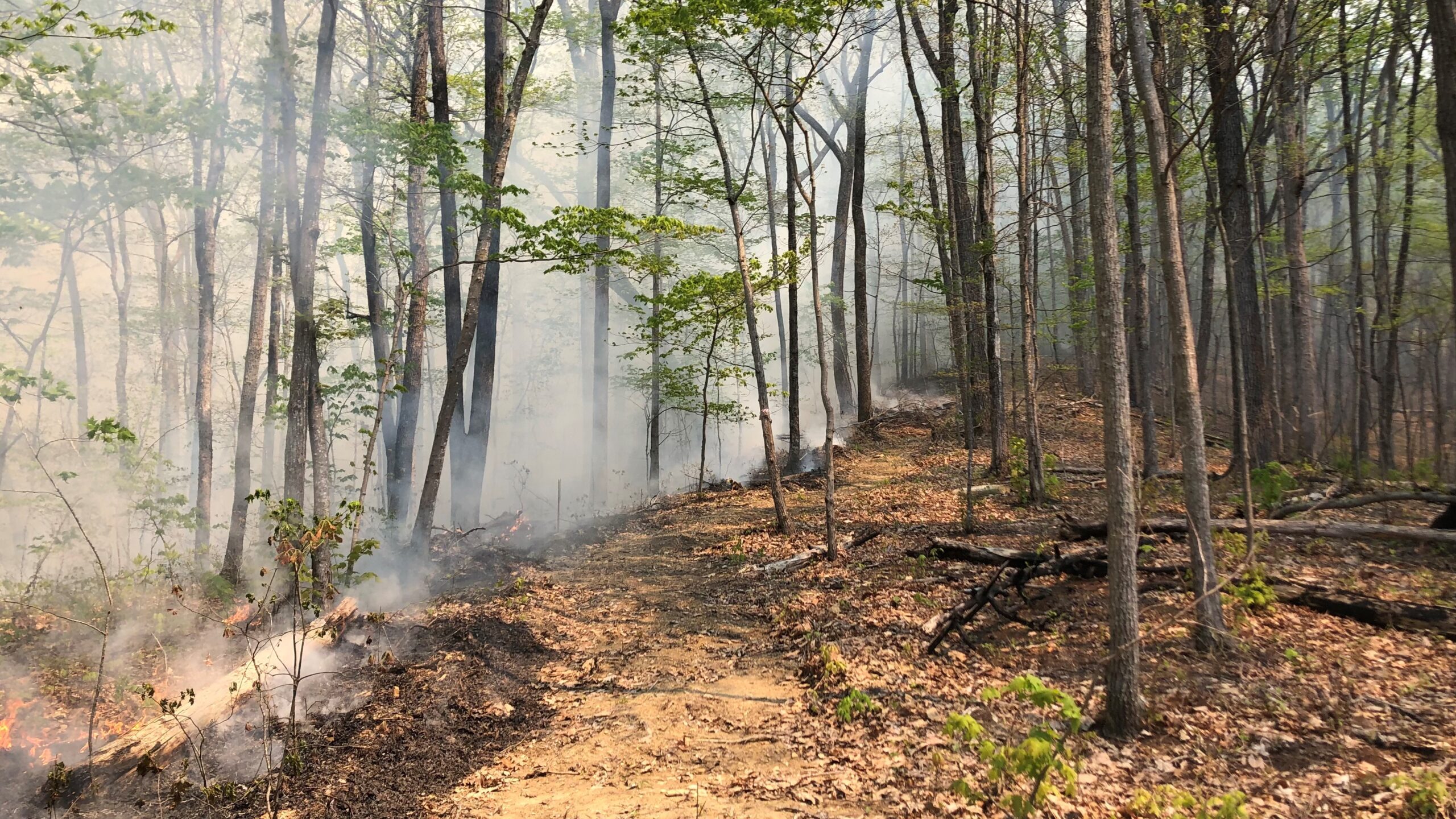by Phil Vogel, Forest Technician
No image of American forestry is more iconic and recognizable than Smokey Bear and the slogan: “Only YOU can prevent forest fires.” The face of the longest-running public service ad campaign, Smokey Bear was born in August 1944 as a part of wartime propaganda that sought to safeguard a national resource—wood. Decades before the birth of Smokey Bear, a surge in devastating wildfires culminated in 1910 in one of the worst fire seasons the US has ever experienced, leading to national efforts in fire suppression. The widespread exploitation of America’s forests starting in Colonial times left abundant logging slash that provided unusual loads of fuel for wildfires. Ironically, the desolate conditions of America’s forests that led to fire suppression policies also led to the development of the forestry profession and scientific forestry in America, which has more recently birthed a movement to bring fire back into the landscape.
It is part of the nature of forestry that the consequences of a decision are often experienced decades or even centuries after its enactment. In the western part of the country, the total area burned by wildfires saw a steep decline following the emergence of fire suppression. After reaching its lowest point in the 1970s, the trend reversed, and, despite rigorous suppression efforts, wildfires have increased since then. In contrast, the eastern US has not seen a trend reversal, and fire occurrence remains low compared to historic levels.
Historical evidence suggests that fire—either ignited by lightning or Native Americans—played a key role in shaping the forest in the eastern US. As William M. Denevan argues in his landmark article “The Pristine Myth,” pre-European America was not an untouched wilderness. Instead, Europeans would have encountered a landscape intentionally stewarded by Native Americans for a variety of goals. Controlled burns were among the tools that Native Americans employed to tend the forest.

Centuries of burning produced the oak-hickory forests endemic to Berea today. The cessation of burning has resulted in a proliferation of fire-sensitive species in the understory of our forest, signaling a fundamental change in forest structure that threatens the sustainability of the social, cultural, and ecological resources of Berea Forest. Recently, in an effort to restore a healthy forest, the Berea College Forestry Department has performed several controlled burns. The objectives of these burns include controlling non-native invasive species (e.g. bush honeysuckle), reducing the density of fire-sensitive species (e.g. American beech), and promoting the growth of fire-resistant species (e.g. white oak) while creating a more open forest structure with medium light levels. The Forestry Department is also collaborating with the University of Louisville on multiple research projects that will evaluate the effects of the controlled burns on the forest over time.
We invite you to see the results of the controlled burns first-hand. Follow the Burn & Learn Trail, which runs between the Hike & Bike Trail and the Indian Fort Mountain Trail, to find informational signs describing the art and science of restorative forest management and to see the effects of a controlled burn as well as other forest management practices. The fire lines used to contain the controlled burns also remain open to the public. Follow these to compare recently burned areas to unburned areas. To some eyes, the initial results of a controlled burn might look messy—or even a little bit ugly. We ask those with such eyes to return year after year to watch an oak-hickory forest and its flora and fauna flourish.
Good forestry takes time, patience, keen observation, and humility. Take for example Smokey Bear, who has updated his slogan to “Only You Can Prevent Wildfires.” His new slogan takes the lessons of the past century and the hopes for the next one to heart. Wildfires remain dangerous to both humans and forests, but controlled burns, safely implemented by trained practitioners, could prove to be key to the health and sustainability of Berea Forest.
